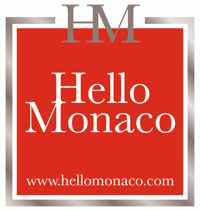It all culminated on World Environment Day back in the summer of 2009. Prince Albert II was in the village of Roubion for a palpably historic occasion. The Sovereign was helping release bearded vultures back into the region. The large birds of prey are one of the most endangered European bird species and had completely disappeared from the Southern Alps over a century ago. Prince Albert II took it upon himself to play a vital role in the bird’s reintroduction.
Fourteen years ago, Prince Albert participated in one of the program’s most historic moments when he personally released the birds back into the region. Conservationists across Europe held their breath and crossed their fingers as the majestic birds tasted freedom for the first time ever. On that fateful day, as their silhouettes majestically soared off into the wild, hope was reignited.
First chick hatches in over a century
In the past, others had tried and failed to reintroduce the species into the area. Would the Prince’s efforts prove successful? In the 1970s, Zoologists Paul Géroudet and Gilbert Amigues were the first ones to attempt to release vultures that had been captured in Afghanistan into the French Alps. But it was difficult to capture the vultures and too many died in transport on their way to France. Sadly, their efforts were in vain.
Thirty years ago, in 1993, a new reintroduction program began to take shape. When the Prince Albert II of Monaco Foundation was formed in 2006, it decided to take up the reins of the program. The Foundation swiftly acquired six young birds over three years, then released them into the wild in 2007, 2008 and 2009 after tagging them with GPS equipment. The first release of the bearded vultures in 2007 was a symbolic day, as it was the Prince Albert II Foundation’s first accomplishment. In 2008, the very first baby chick hatched in the Southern Alps … the first in over a century!

How are the bearded vultures doing today? The Prince takes stock
Prince Albert II visited Saint-Dalmas-le-Selvage on 2 July 2023 to celebrate the 30th anniversary of the bearded vulture reintroduction program. A pair of the birds have taken up residence on the peaceful rock face of the Prêtre. The couple’s third chick was born this year. To mark the anniversary, the new baby vulture was named Trenta. Upon arrival, the Sovereign Prince quietly watched the nest through a telescope.
The bearded vulture is now considered “established” in the southern Alps. In total, forty-five young bearded vultures have been released in the area. In three decades of hard work, twenty-five bearded vultures have hatched in the Mercantour national park alone. It is now estimated that there are around eighty bearded vultures in the region. Since the program began, awareness about the bird’s important role in the ecosystem has increased and it is now protected at the European level.
“The success of this repopulation program is above all a great human adventure spanning more than three decades, and would not have been possible without the strong and determined involvement of a whole network of partners. This action has been made possible thanks to the unfailing support of the HSH Prince Albert II of Monaco Foundation, the Foundation for the Conservation of the Bearded Vulture and Europe. HSH Prince Albert II has understood the importance of a new relationship with nature and animal species more and better than others… Long live the Bearded Vulture!”, said Charles Ange Ginesy, President of the Alpes-Maritimes Department and the Mercantour National Park.

The Prince’s Home in Roubion
Monaco’s Sovereign Family has supported the Parc National du Mercantour since it was created in 1979. After visiting Roubion for the reintroduction program, Prince Albert II fell in love with the village. Philip Bruno, mayor of the village, noticed the Prince looking at an old sheepfold which was in need of renovations. He told Prince Albert II that it was for sale and the rest is history. The Prince and his family now escape their busy lives for restful holidays in their home tucked away in a village with a population of just over one-hundred.
The village of Roubion’s name comes from “rup” which designates a cliff. An archaeological site called ‘Tournerie’ was discovered in 1996 by Jean Latour. A Gallic sanctuary from the Iron Age, archeologists unearthed many bronze pieces dating from the Second Punic War (218 to 201 BC). The village was burnt down during the Nine Years’ War in the late 1600s and the subsequent War of the Spanish Succession between 1701 and 1715.
Hit by Storm Alex
On 2nd October 2020, the village was impacted by a natural disaster. Fifty-five municipalities, including Roubion, experienced floods and mudslides. Parts of Roubion remained inaccessible for over one week and electricity was only restored after eighteen days. Storm Alex brought 450 mm of rain to the region in only 24 hours, the equivalent of nearly four months of precipitation. The devastating floods swept away roads and homes and killed at least five people.
Right after landing from an official trip to Serbia, HSH Prince Albert II immediately flew from the Monaco Heliport to Roquebillière and Saint-Martin-Vésubie to support Storm Alex victims.
With profound emotion in his voice, Prince Albert II spoke with journalists, thanked local authorities and affirmed that Monaco would provide material and financial assistance to the region. Workers from the Monegasque Red Cross, the Princess Grace Hospital Centre and Monaco’s Firefighters were quickly dispatched to the scene alongside other associations and volunteers from the Principality.
Prince Albert’s connection with the Alps runs deep. Through his inspiring and successful bearded vulture conservation efforts, his support of the Mercantour national park and his aid for flood victims, Prince Albert II has shown his unwavering commitment to the people and creatures that inhabit the region.








